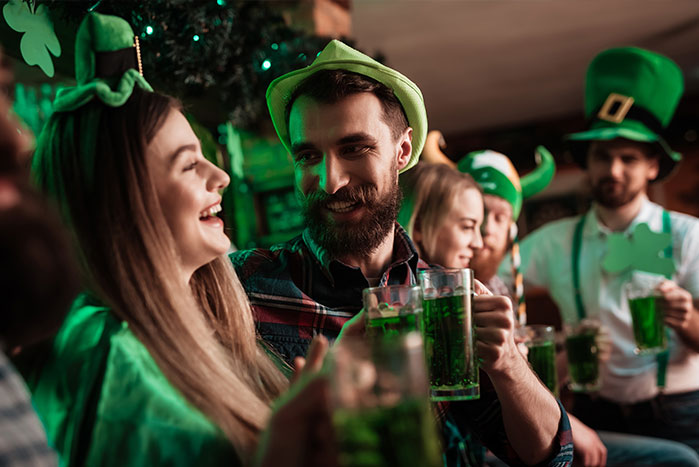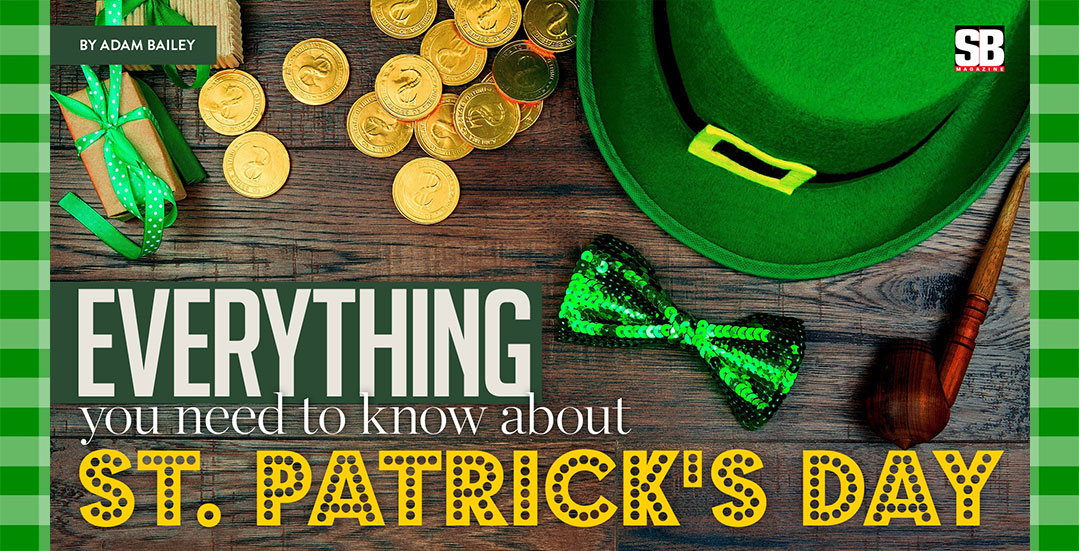On March 17th of each year, millions mark the traditional feast day of St. Patrick, the patron saint of Ireland. Here’s everything you need to know about past celebrations from the first ever St. Patrick’s Day parade to the history behind the traditional dish of corned beef and cabbage.
WHO WAS SAINT PATRICK?
St. Patrick, the patron saint of Ireland, was born Maewyn Succat to a Christian family in Roman Britain in the late fourth century AD. Shortly before he was 16, Patrick was captured by a group of Irish raiders who took him to Ireland and forced him into slavery. Six years later he escaped home to Britain. Believing he had been called by God to Christianize Ireland, he later returned to Ireland as a missionary of the Catholic Church. He played an important role in converting the native Irish to Christianity, travelling around the country performing baptisms and confirmations.
WHEN WAS ST PATRICK’S DAY FIRST CELEBRATED?
By the end of the 7th century, St. Patrick had become a legendary figure and was venerated as a saint—although he was never formally canonized. Legends around St. Patrick, many of which are still told today, include the story that he drove the snakes of Ireland into the sea to their destruction. Natural historians, however, have suggested that there is no evidence of snakes having ever existed in Ireland—as the country was too cold during the Ice Age for reptiles to survive.
It wasn’t until the 1630s that March 17th, the traditional day of St Patrick’s death, was added to the Catholic breviary of as the Feast of St. Patrick. By the late 17th century, Irish people were celebrating the day by wearing crosses, ribbons, or shamrocks—the latter which St. Patrick used to explain the concept of the Holy Trinity to an ‘unbeliever’ by showing them the three-leaved plant with one stalk.

WHY IS ST PATRICK’S DAY LINKED WITH THE COLOR GREEN AND THE SHAMROCK?
Though green dominates the celebrations today, it was the color blue—a shade known as St. Patrick’s blue—that was first associated with the saint. The earliest depictions of St. Patrick show him in blue garments, and the color also appears on ancient Irish flags.
In 1541, when King Henry VIII was declared the first English king of
Ireland, he used a gold Irish harp on a blue flag for the Irish coat of arms. The blue shade also appears on the 18th-century Order of St. Patrick, an order of chivalry created by George III. As the blue symbols became more associated with English rule, green grew in popularity as a symbol of rebellion. During the 1798 Irish Rebellion, the shamrock became a symbol of nationalism and the ‘wearing of the green’ on lapels became regular practice.
WHEN DID THE FIRST ST PATRICK’S DAY PARADE TAKE PLACE?
The first parade has long been believed to be a small celebration by Irish colonists, held in Boston, Massachusetts, in 1737. However, in 2018 historian J. Michael Francis of the University of South Florida found evidence to suggest that, in March of 1601, residents of St. Augustine in Spanish Florida gathered together and proceeded through the city’s streets in honor of St. Patrick, who seems to have served as the official ‘protector’ of the city’s maize fields.
WHY IS CORNED BEEF, CABBAGE, AND POTATOES THE TRADITIONAL FARE OF ST PATRICK’S DAY?
When Abraham Lincoln was inaugurated on March 4, 1861, the president chose a meal of mock turtle soup, followed by corned beef and cabbage—a dish traditionally associated with St. Patrick’s Day feasting.
Beef was not traditionally an Irish dish; it was under British rule that the cow came to be farmed for meat. In the era of colonial rule, beef’s prohibitive cost in Ireland meant that it “became synonymous with the well-fed British aristocracy and middle class.” Later, with the invention of ‘corned beef’ in the 17th century, it was Ireland’s substantially lower salt tax—and not the beef itself—that cemented its reputation as an Irish export.
As large numbers of settlers moved to America and gained greater prosperity, beef was back on the menu. Once Irish Americans popularized St. Patrick’s Day as a celebration, the corned beef and cabbage of their ancestors became the traditional fare of the day.
WHY DOES CHICAGO TURN ITS RIVER GREEN DURING ST PATRICK’S DAY? AND WHEN DID IT START?
Chicago has colored its river green to mark the holiday since 1962. In 1961, sanitation workers realized that the green vegetable dye they used to check for dumped sewage could double as a St Patrick’s Day decoration—and so a tradition was born. It reportedly takes 40lbs of dye to achieve the verdant hue, while the color can last from a few hours to two days.
WHAT ABOUT ST. PATRICK’S DAY PARADES?
The first St. Patrick’s Day parade took place in America—not in Ireland. It took place in New York City on March 17, 1762, and since that day, cities across the United States have competed for the biggest and best St. Patrick’s Day celebration.
The honor of the shortest parade is held by Hot Springs, Arkansas, where Irish pride is all about staying small. Host of the “World’s Shortest St Patrick’s Day Parade,” Hot Springs holds its annual procession on the 98ft-long Bridge Street, named the “world’s shortest street in everyday use” by Ripley’s Believe It or Not. In true Irish style, the idea for the parade was born over a few drinks at a Bridge Street pub in 2003, with the first marchers taking to the pint-sized street in 2004.










